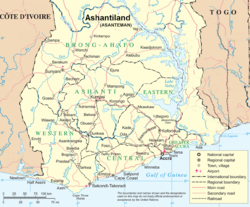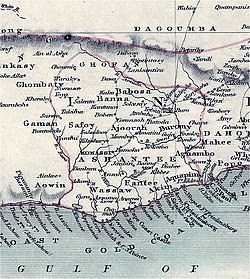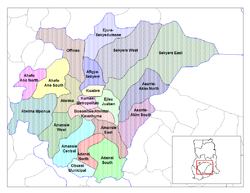This article needs additional citations for verification .(May 2025) |
| King of the Asante | |
|---|---|
| Asantehene ma Asanteman | |
| Incumbent | |
 | |
| Osei Tutu II since 26 April 1999 | |
| Details | |
| Style | His – Your Majesty |
| First monarch | Osei Tutu Opemsoo 1701 to 1717 |
| Formation | c. 1670; 354–355 years ago |
| Residence | Manhyia Royal Palace |
| Website | The Asante Monarchy |
The Asantehene is the title for the monarch of the historical Ashanti Empire as well as the ceremonial ruler of the Ashanti people today. The Ashanti royal house traces its line to the Oyoko (an Abusua , or "clan") Abohyen Dynasty of Nana Twum and the Oyoko Dynasty of Osei Tutu Opemsoo, who formed the Empire of Ashanti in 1701 and was crowned Asantehene (King of all Asante). [1] Osei Tutu held the throne until his death in battle in 1717, and was the sixth king in Ashanti royal history. [2]
Contents
- Elections and regents
- The colonial era and Asante independence
- List of rulers
- Kwaamanhene of the Kwaaman State
- Kumasehene of the Kumaseman State
- Asantehene of the Kingdom of Ashanti (Ashanti Empire)
- See also
- References
- Further reading
- External links
The Asantehene is the ruler of the Ashanti people. The Asantehene is traditionally enthroned on a golden stool known as the Sika 'dwa , and the office is sometimes referred to by this name. [3] The Asantehene is also the titular ruler of Kumasi, which served as the capital of the Ashanti Empire and today, the Ashanti Region. The Ashanti Empire comprised parts of present-day southern Ghana and portions of present-day eastern Côte d'Ivoire between the 17th and 20th centuries. [3] [4]
The current Asantehene is Otumfuo Nana Osei Tutu II, born Nana Kwaku Dua, who ascended as the 16th Asante king in April 1999. Osei Tutu II was one of seven descendants who were eligible to the heir presumptive. [5]





